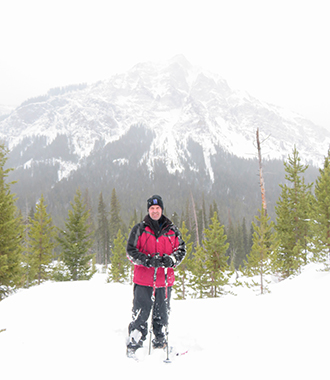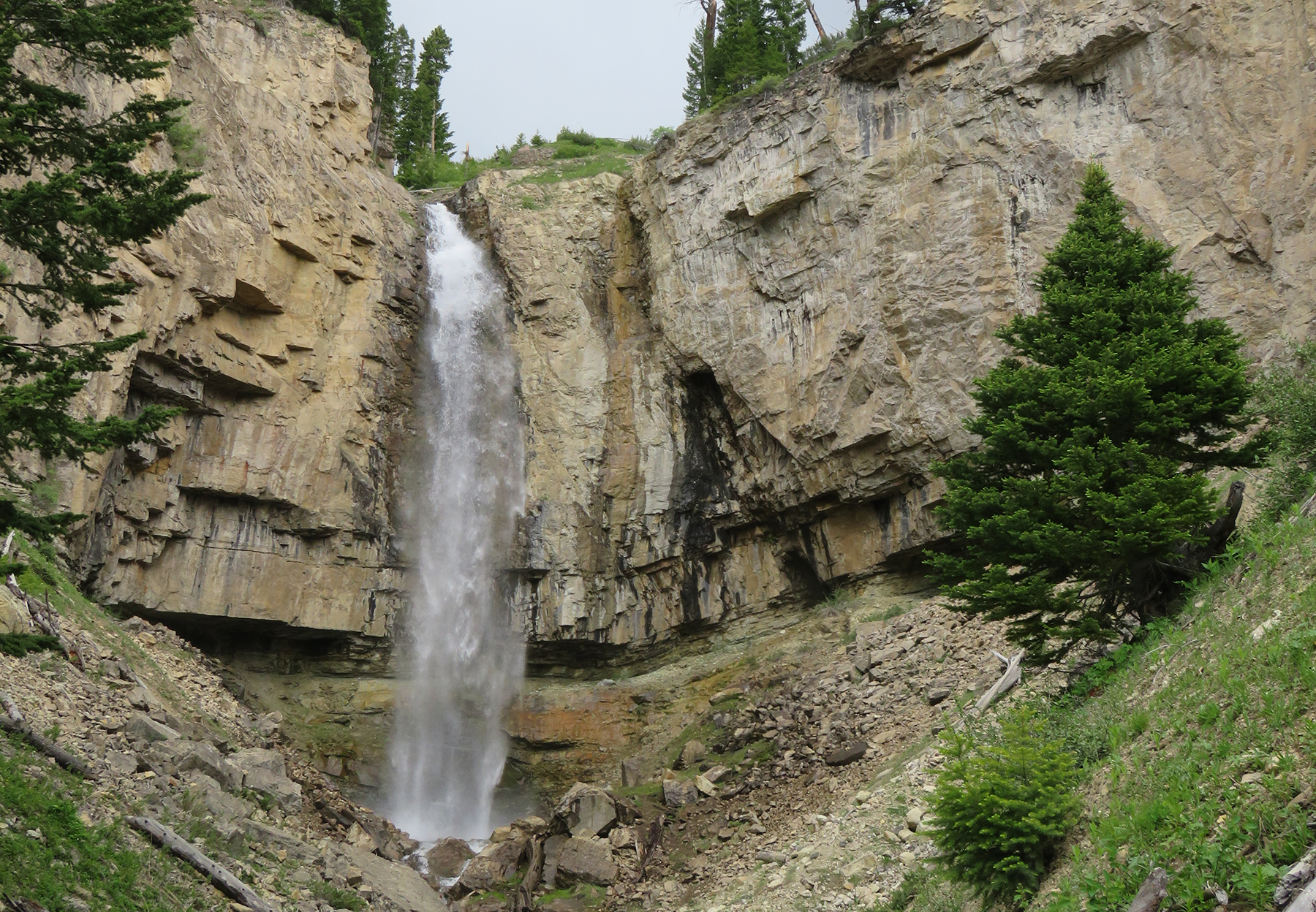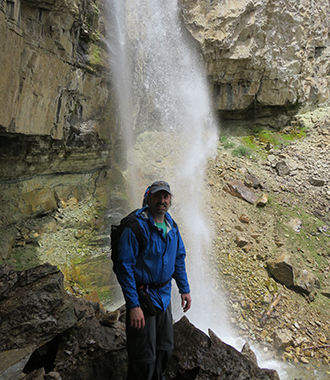The Legend of Forrest Fenn
One of my Northwestern buddies, Eric Lippert ’92, and I lived this adventure last summer while hunting for the Forrest Fenn fortune, a hidden treasure that had appreciated in both lure and lore over the past 10 years.
Eric was an ideal treasure-hunting partner. After Northwestern, four of us moved out to live in Jackson, Wyo. We all had visions of living in the outdoors forever. But Eric was the only one able to sustain the dream over the long haul.
Sure, Eric and I were disappointed in not finding the treasure that day in June 2019. But this is also true: I have never had as much fun not finding anything in my life.

Jim Miller at Sheep Creek Falls in southern Montana during a snowshoe expedition
How often in real life do any of us get the chance to search for an actual hidden treasure? How often do we live to discover a chest full of gold?
For a moment, Eric and I were on that threshold, very much alive.
“That was awesome,” Eric said as we got back in the truck, a grin stretched across his face.
That search was one of several we took into the far reaches of Montana and Wyoming looking for Fenn’s treasure. It would also be our last.
On Saturday, June 7, 2020, we were disappointed once again when the Santa Fe New Mexican confirmed — after speaking with Fenn by phone — that the purported fortune had been found by an anonymous treasure seeker.
I called Eric at his home in Jackson, and we talked about it. We recalled the wild tales of searching for Fenn’s chest, laughing like two kids lighting firecrackers for the first time.
You may have heard the story: In summer 2009, Fenn, a former art dealer and millionaire outdoorsman, said he took a hike somewhere in the vast expanse of the Rocky Mountains and hid a bronze chest full of gold, gems and artifacts. Then he challenged the world to find it.
His goal? To urge people to put aside their high-tech devices for a moment and explore our natural wonders.
To find the chest, Fenn said, one had to correctly decipher the nine clues scattered among the 24 lines of one of his poems. The poem, which first appeared in Fenn’s 2010 memoir, The Thrill of the Chase, was the treasure map.
According to Fenn, hundreds of thousands worldwide had been drawn to his hunt over the past decade.






Reader Responses
Awesome story of adventure seeking and soul searching. The pictures are stunning also.
Thanks Jimmy!
—Dion Crushshon '92, Minneapolis, via Northwestern Magazine
No one has commented on this page yet.
Submit a Response